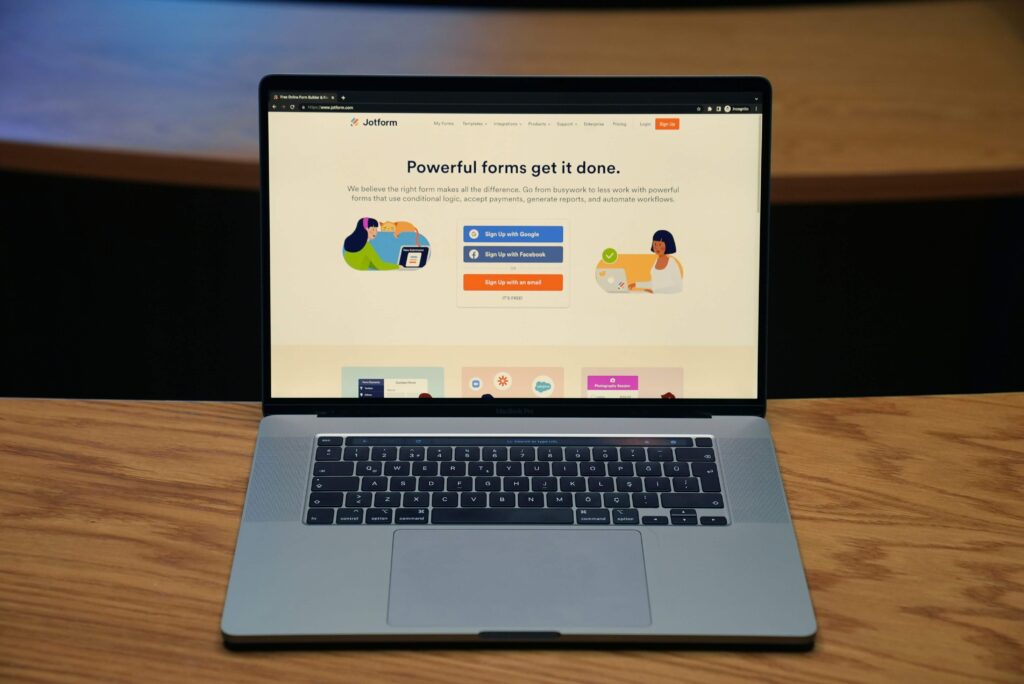accessiBe is one of the most talked-about web accessibility tools available today. It helps take a lot of the manual work out of adhering to ADA and WCAG guidelines by making it quicker and easier to identify web accessibility issues on your site.
A Web Designer’s Complete Guide to Accessible Fonts
Design, navigation, and page layout are just a few of the factors that matter when it comes to creating an accessible site. However, the smaller details are important too.
In fact, it’s sometimes the smaller details that end up compromising your website, making your business a target for ambulance chasing law firms.
We’ve created this guide to the most accessible fonts to ensure that ADA compliance for websites is that much easier for you and your clients.
Accessible Fonts Explained
Unfortunately, not all fonts were created with accessibility in mind. Many websites use fonts that are difficult for people with disabilities to process. Size, color, and contrast all matter regarding accessible fonts.
The wrong fonts don’t just affect those living with disabilities either, even those with learning difficulties such as dyslexia struggle with certain text.
Using ADA compliant fonts during the web design process ensures that your content is easier to read, your site navigation is convenient, and that assistive technology such as screen readers functions as it should.
When you only focus on the aesthetics of a font, you are isolating certain website visitors, which is exactly what the ADA advises against.

Why Do Accessible Fonts Matter?
The Americans with Disabilities Act, and many other disability acts across the globe, aims to remove the online barriers countless people encounter daily due to certain type of disability.
Websites that fail to comply with web accessibility requirements could face compliance lawsuits and damage their brands for good. Not to mention all the customers you are potentially losing out on because your site is inaccessible to those living with disabilities.
Now that you better understand why something as simple as a font is essential during the accessibility process, let’s get into the details of how you can comply.
What Makes a Font Accessible?
When choosing the right font for a website, there are a few important points to remember.
Letter height & differences
The height and differences between capital and lowercase letters shouldn’t be the same.
Letter spacing
Ensure that the font you choose provides adequate spacing between letters and characters.
Similar characters
Pay attention to characters that might look the same when using certain fonts. o, e, a, and c are examples of this.
Font weights
A thin weight on smaller font size is not deemed to be accessible. Neither are narrow-width fonts.
Font colors
Lastly, if you use fonts in different colors, it’s important to be aware of color compliance requirements – more on this further down.
It should also be noted that accessible fonts don’t end on your website. Any platform or media you use to communicate with your target audience requires accessible fonts, including images, emails, and PDF documents.
The Best Fonts for Accessibility
There are many popular fonts (1) to choose from, but not all of them are ideal for accessibility purposes.
The most accessible fonts you can use on your site include:
• Calibri
• Times New Roman
• Tahoma
• Arial
• Helvetica
• Verdana

The following are also considered more accessible than others but are better suited to headers:
• Slab
• Arvo
• Rockwell
• Museo
The Power of Text-to-Speech Software

Along with using the correct fonts, online users with disabilities can benefit from using text-to-speech software, making on-screen text easier to read.
Software such as OrCam Learn Basic magnifies and reads text aloud, helping users engage with content more easily by giving them the option to listen to content rather than struggling with trying to decipher written words.
Listening to text can be faster than reading and makes it easier for users to truly focus on what they’re reading without worrying about fonts.
Guidelines for Implementing Accessible Fonts
Choosing the right font (2) is just the first step. You also need to know how to correctly apply the font on your site.
Remember, just because you’ve chosen an accessible font doesn’t mean your text is automatically legible. For example, one visitor may require a larger font size than the next.
Here are the guidelines to keep in mind when applying an accessible font to your website:
Devices & Technology
The size of your text needs to work on an array of devices and with different assistive technologies.
This includes smartphones, tablets, and desktop devices, with screen readers being one example of a common type of assistive technology.
Visitors should also be able to increase or decrease the size of your text while leaving other elements intact, especially to comply with WCAG Success Criterion 1.4.12 Text Spacing (3). This is where font size requirements come into play.
Font Size
Defining font sizes in percentages, em, or rem is best. When defining font sizes in pixels or points, it’s difficult for a user to only increase or decrease the text size without affecting other elements such as images and your menu.
Regarding the minimum font size for accessibility, there is no hard and fast rule. However, it’s recommended that you start at 1 rem, which is the equivalent of 16px.
Font Color
Then there’s font color. It’s important not to rely on font color alone to convey meaning. Color shouldn’t be used to interpret a visual element or encourage a user to take a specific action.
If you must use font color to convey meaning, be sure to provide an alternative so that visitors with low color perception can also understand. Examples include providing visual cues like underlining or bolding, such as in the case of differentiating a link within a block of regular text.
Lastly, applying the correct color contrast ratio to your text is important. A minimum ratio of 4:5:1 is recommended for body text, while 3:1 is ideal for headings.
Who Can Make your Website Accessible? Our Top Recommendations
- WCAG
- ADA
- AODA
- Section 508
- Account managers available to guide you
- 5 min installation
- 100,000+ clients use accessiBe
- Includes accessibility statement and certification
- Built specifically for websites and small and medium-sized businesses (SMBs)- some web apps might not be compatible




- WCAG
- ADA
- AODA
- Section 508
UserWay is trusted by thousands of leading brands that want to create a more inclusive experience for their online users. With the help of an easy-to-use accessibility overlay, it’s never been easier to ensure your Magento site is compliant with some of the top ADA requirements.
- Quick and easy process
- Multiple solutions and services offered
- 1M+ website installations
- Special monitoring tools for developers
- Customer support is lacking




Wrapping Up
While applying accessible fonts to your site might take some additional time, it’s an essential part of the web design process. Not only are you creating a site that’s more accessible to all users, but you’re broadening your customer base and avoiding unnecessary and damaging lawsuits.
Find out whether your website is accessible or not by conducting a test on Accessibility Checker
Want to learn more about WCAG and ADA compliance? Here are a few highly recommended blogs:
- The Basics of ADA Website Compliance Testing
- Steps for Achieving Mobile App ADA Compliance
- Top 3 WordPress Accessibility Plugins
FAQs
Are larger fonts ADA complaint?
There are no hard-and-fast rules about font size in ADA compliance. However, generally speaking, larger fonts are more easily read by people with vision impairments and are more likely to be compliant.
What fonts are ADA compliant?
There is no definitive answer to this question, as different fonts can be more or less accessible depending on the specific needs of the individual. However, some widely used fonts considered accessible include Arial, Verdana, Tahoma, and Helvetica.
Should I use bold fonts to comply with ADA standards?
The Americans with Disabilities Act (ADA) does not specifically mention the use of bold font in its guidelines. However, some experts believe that using bold font can be helpful for individuals with certain visual impairments, as it can make text stand out more and be easier to read. However, others claim that using bold font can make the text look blurry.
Accessibility Checker
Scan your website for accessibility related issues for free




